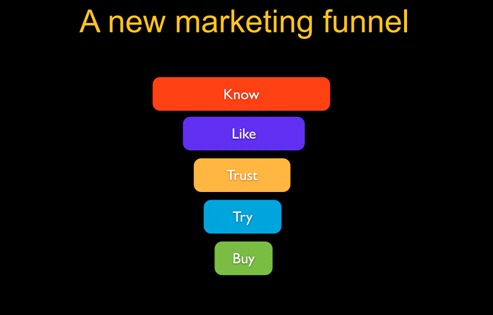What is a content strategy?
Until recently, content strategy meant managing content intelligently: storing content so that it can easily be re-used for follow-up documentation, for example. This is frequently done using a content management system (CMS), i.e. a system that organises the collection, creation, management and publication of information.
What I think – and many people would agree with this – is that the user should play the key role in determining content strategy. A content strategy should be viewed as a preconceived plan that determines how content, in which a particular audience recognises a certain value, can help to achieve an organisational objective. In the context of technical documentation, this means drawing up a plan of how best to organise product information and how to offer it to a target group. A content strategy makes it clear what content should be exchanged, with whom, at what time and using what medium
The importance of relevant information
Not all information is relevant to each user. A manual is there to provide support to the user. The user wants your assistance: they might want to get to work on a product, software, machine or installation or they might want to solve a problem using that product. Therefore, from all the product information it is important to choose that which is relevant to a particular user in order for them to (safely) install, maintain or repair a product, for example.
Another important aspect is that the user wants direct access to your content as and when they need it. They can access it by consulting a printed manual but, in many situations, that is hardly an ideal solution. A tablet with relevant information might be handier for engineers maintaining complex systems than a thick folder, while online information or context-sensitive help is usually more useful to software users than other sources. That is why users increasingly (or, even, typically) access content, including manuals and other forms of user support, on their mobile devices. The trouble is that a great deal of content is still not displayed, or not properly displayed, on mobile devices! For an optimal user experience, it is therefore important to have a strategy that ensures content is properly provided on different platforms. As soon as you determine relevant content, you can decide which medium to use to make the information available to the user.
Customer Engagement
Proper user support ensures a better user experience and, therefore, customer engagement. The figure below makes it clear that most users first research a product before proceeding to buy it. In the past, they would do their research by talking to a salesperson in a shop, but that is no longer the case. Nowadays, they search the Internet for information in order to get an idea about which product to buy. However, if they choose not to buy the product directly online, then they go to a shop and tell a salesperson which product they want instead of asking them for further information.

Task analyses and cross-media output
A good plan is necessary for the correct distribution of content. Not only does content need to be relevant to the user, it also needs to be accessible on various screens and platforms. One way to make a good plan is to perform a user and task analysis.
The purpose of a user and task analysis is to identify different types of user groups and any tasks they need to complete. For example, if you place a machine on the market, your various users might include:
- Buyers
- Installers
- Operators
- Maintenance staff
You can then determine for each user group which tasks they need to complete. For example, tasks for installers might consist of unpacking, mounting, adjusting and connecting the machine and then putting it into operation. You can also decide which platform you should use, for each user and even for each task, in order to make your information as available as possible.
